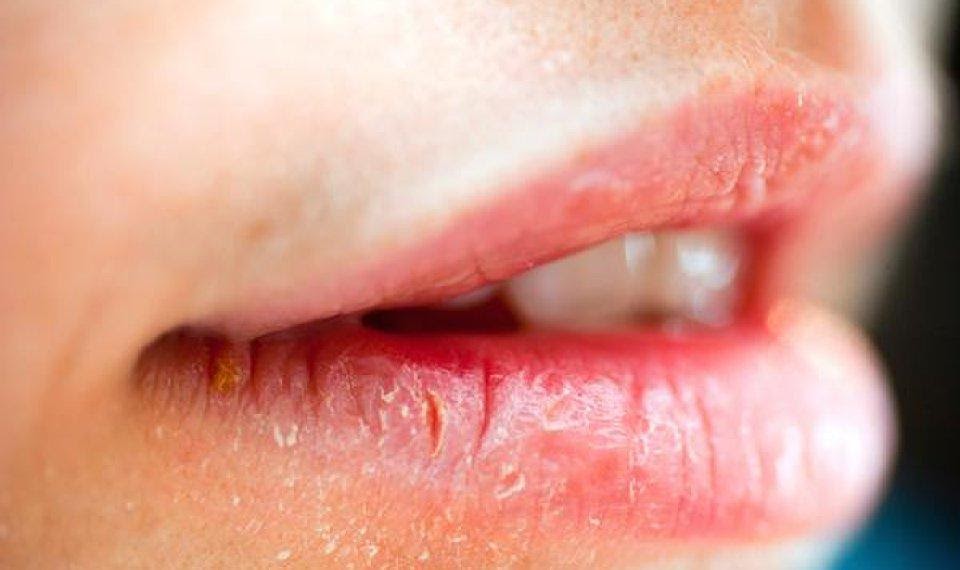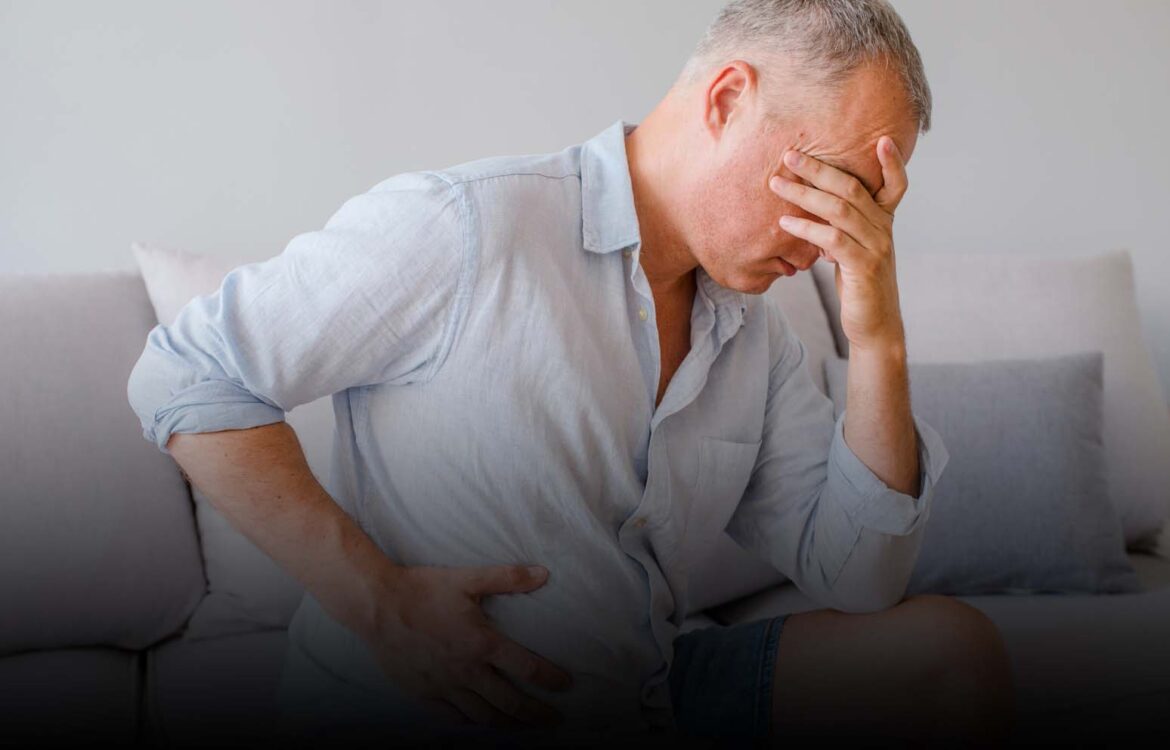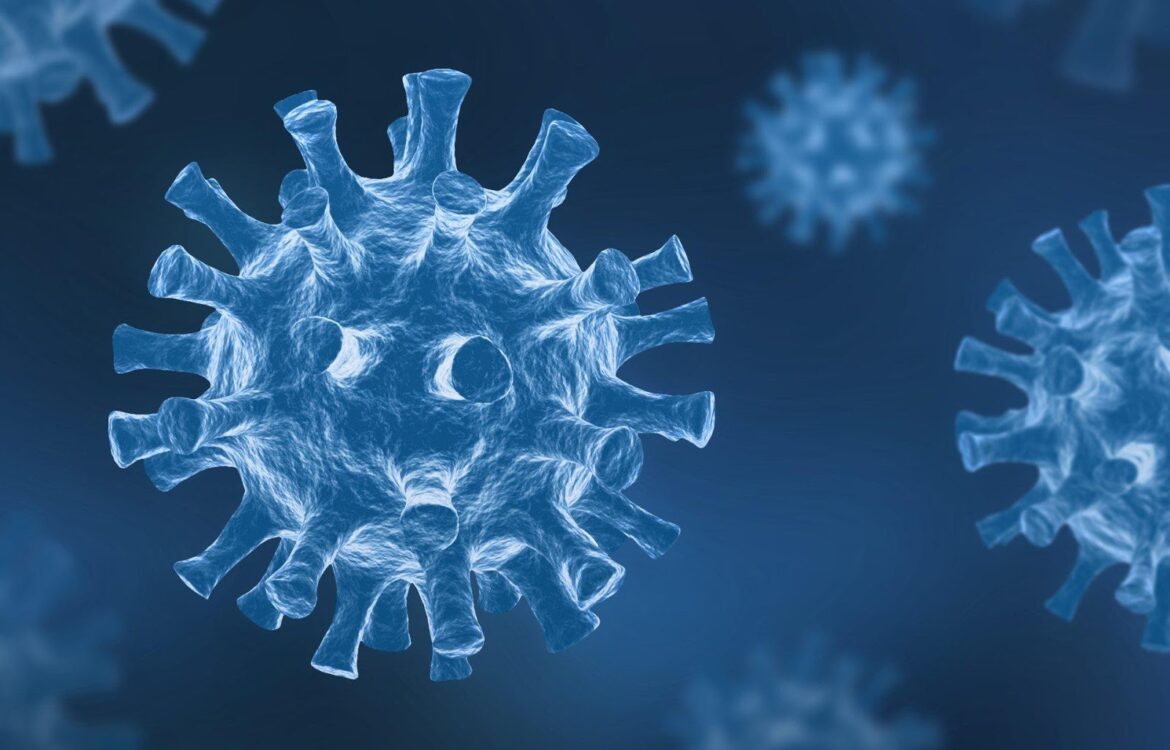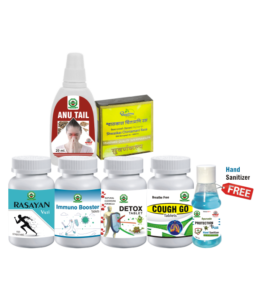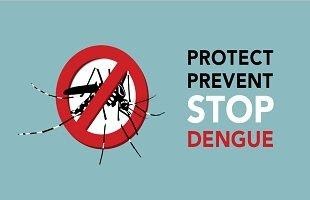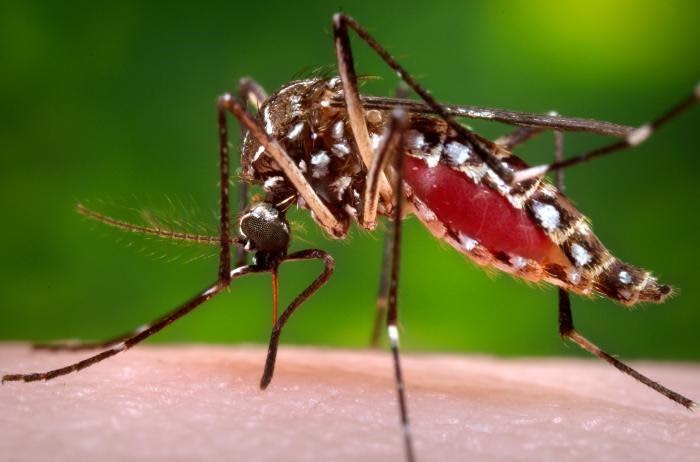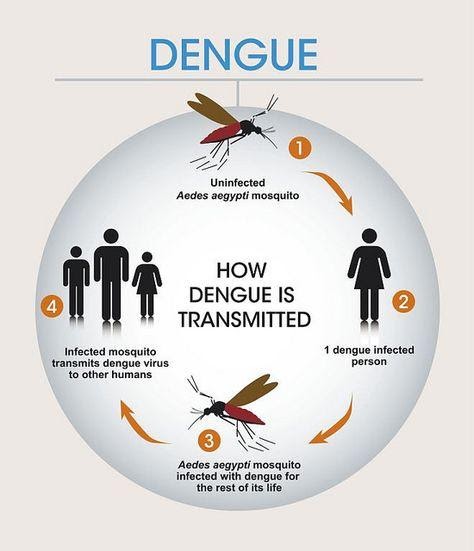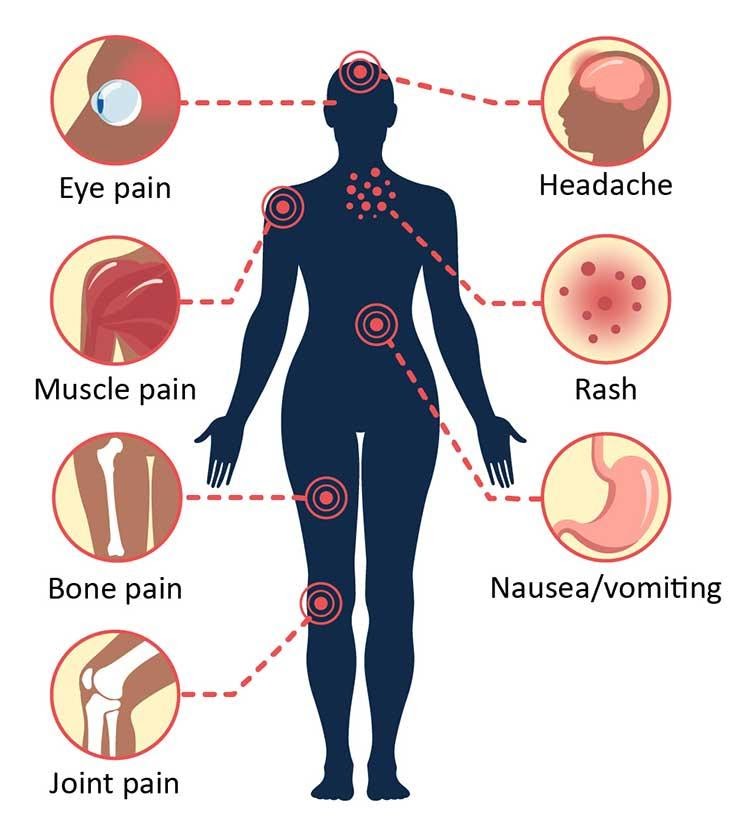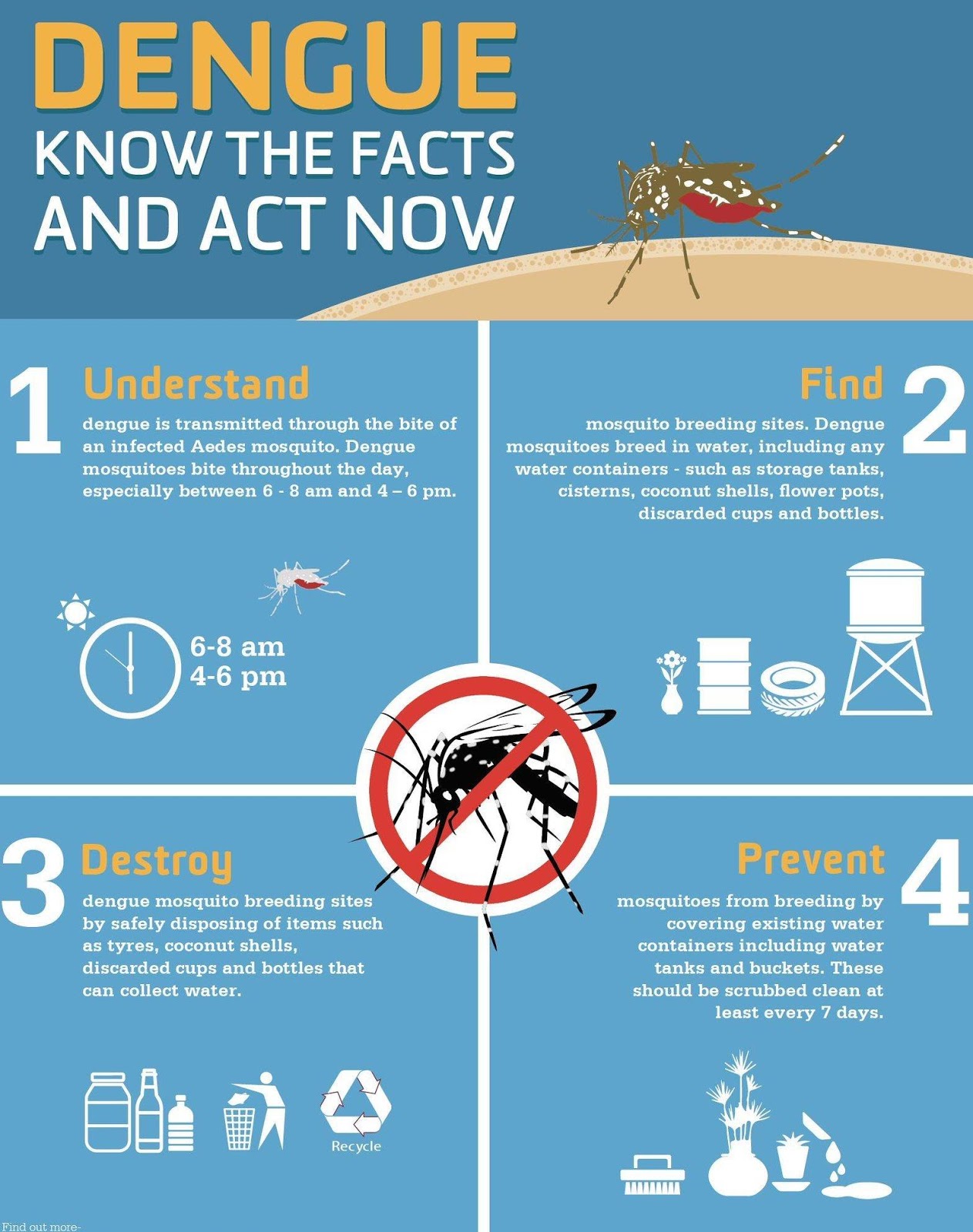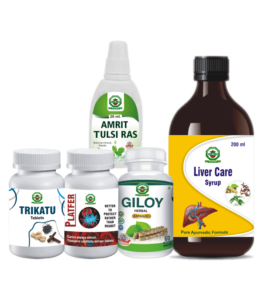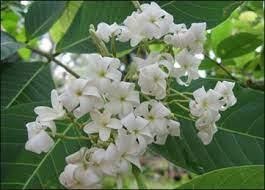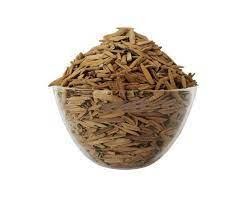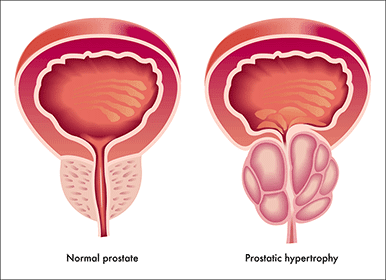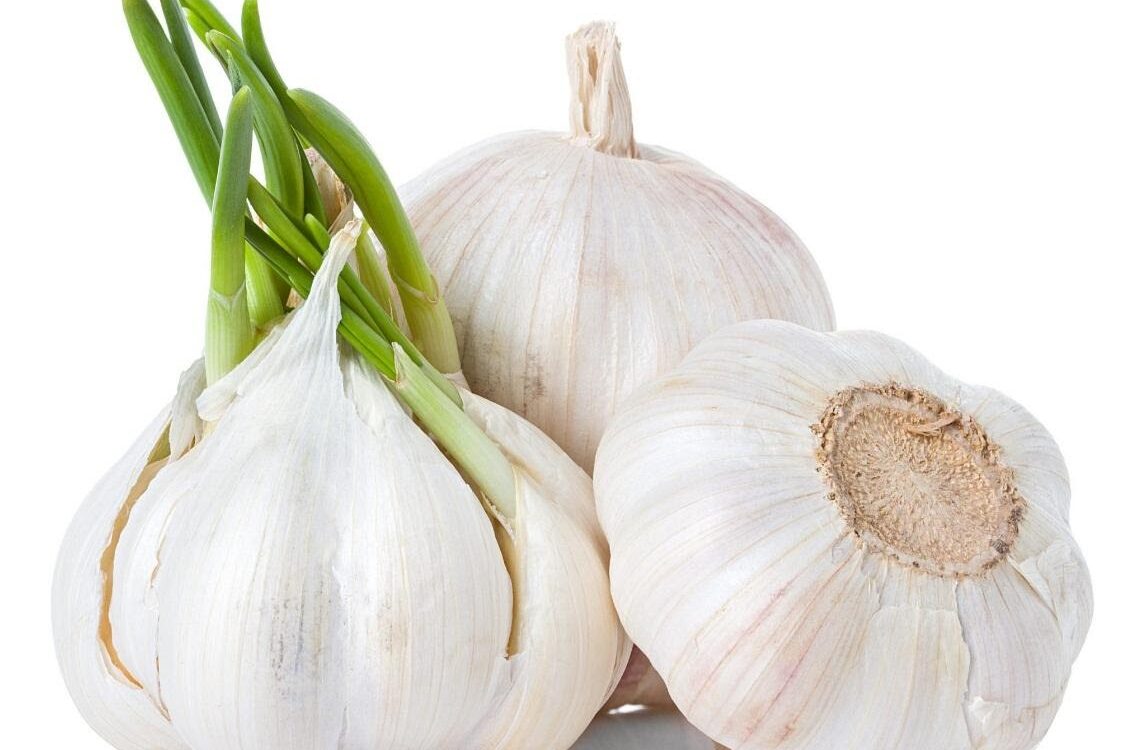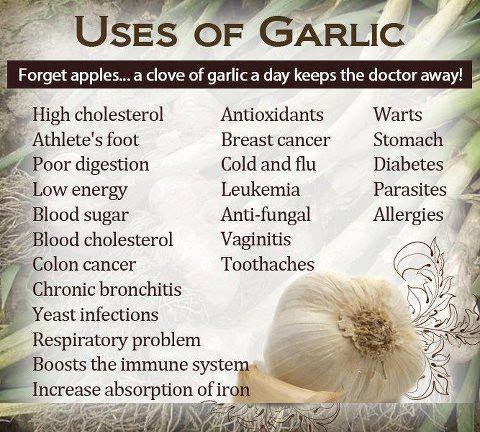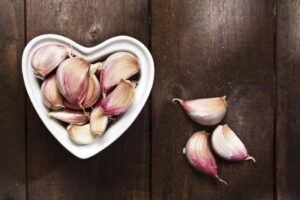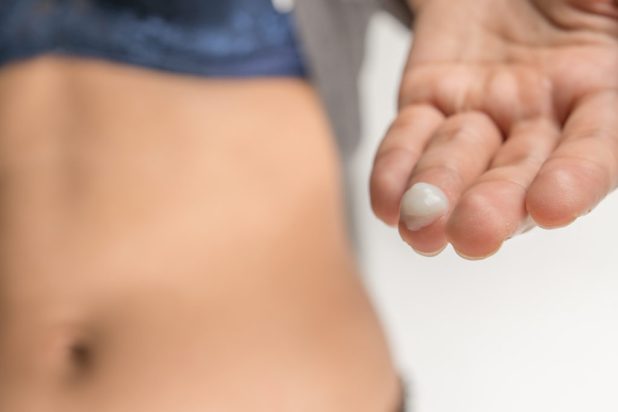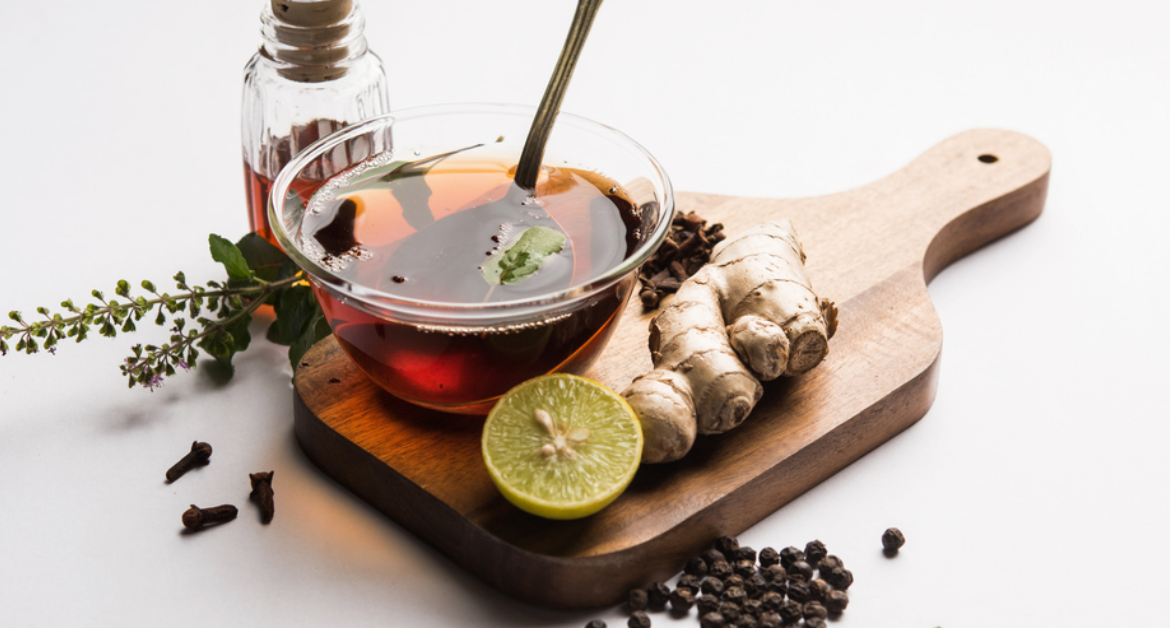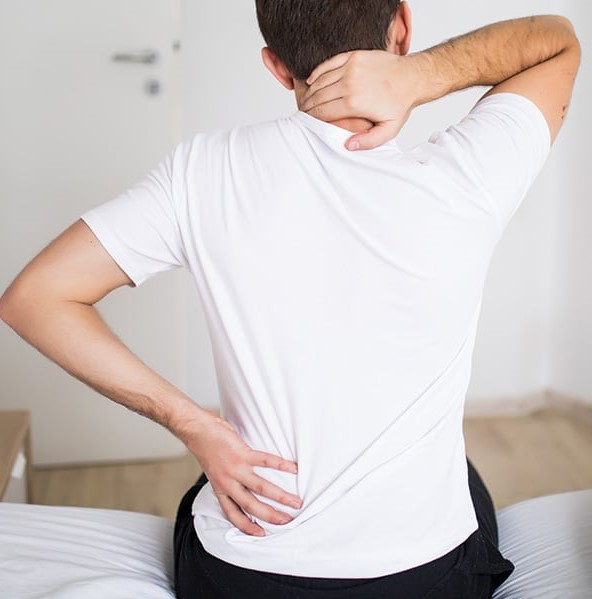Author Archives: Dr. Vaidya Karanvir Singh
HOME REMEDIES FOR CHAPPED LIPS
- May 19, 2021
- Posted by Dr. Vaidya Karanvir Singh
- 0 Comment(s)
Chapped are also known as cracked lips. This term commonly used to describe dry lips.
CAUSES OF CRACKED LIPS?
It can be caused by several factors like-
- Weather
- Sun damage
- Licking of the lips excessively
- By the use of certain medications
It is very common condition that only occurs for most people. But more severe form of chapped lips is called as cheilitis. It can be caused by an infection, characterized by cracked skin at the corners of the lips.
It can be treated with simple treatment and preventive measures. If your lips continue to be severely dry and cracked, you should make an appointment with your Doctor.
Symptoms of chapped lips-
- Dryness
- Flaking
- Scales
- Sores
- Swelling
- Cracks
- Bleeding
SIMPLE REMEDIES-
- Use a good lip balm- Some lip balms are better than others, and popular brands may contain ingredients that dry the lips out.
- For example, many lip balms contain menthol or another mint flavoring. This can provide a cooling sensation, but mint is very drying and can leave the lips more chapped than before.
- Common drying ingredients in lip balms includes –
- Menthol
- Camphor
- Phenol
- On should avoid scented and flavored lip products, as these ingredients can also dry out the lips.
- Choose lip balms that contain soothing and moisturizing ingredients, some of them are as follows-
- Aloe Vera gel- It is enriched with natural soothing gel
How to apply?
- After cleansing of lips apply small amount of the gel to your lips and it provides relief from the pain and tenderness associated with Chapped lips.
- Honey – it has an Anti- bacterial and healing properties.
- It works as an amazing moisturizer which helps to soften your lips.
- Apply honey in the cracked lips 3 to 4 times in a day helps to treat the cracked lips effectively.
- Coconut oil- It is the best remedy against dryness associated with cracked lips
- It protects the lips from temperature like extreme dryness of hot temperature and extreme coldness during winters.
How to apply?
- Take small amount of coconut oil on the cracked lips and keep them moist and soft.
- Milk Cream- It act as a wonderful moisturizer and it contains a low fat.
How to apply- Take out fresh milk cream and apply on the lips leave it for approximately 15minutes and then wash it off with the help of luke warm water. It is also an amazing home remedy for chapped lips.
- Hydration- Chapped lips can be due to dehydration, so drink plenty of fluids to keep your body well hydrated.
- The water helps to eliminate the toxic substance present in the body thus preventing from the chapped lips.
CONSTIPATION REMEDIES
- May 14, 2021
- Posted by Dr. Vaidya Karanvir Singh
- 0 Comment(s)
Find best best home remedies for constipation.
DRINKING MORE WATER
Dehydration is one of the most common causes of constipation staying hydrated is one of the simplest natural remedies for constipation.
EAT MORE FIBRE
Consumption of rich fiber food in your meal is the best remedy for constipation. The consumption of insoluble fiber is known to increase the bulk and consistency of bowel movements. This remedy makes them easier to pass through the digestive system and is one of the most effective home remedies for constipation.
ANJEER
Anjeer provides instant constipation relief when soaked in warm water at night and eat in the early morning. It has high fiber content and is highly recommended. Anjeer is the best home remedy for kids with constipation and it can also improve the digestive system.
MILK AND GHEE
Milk and ghee are effective home remedies for constipation. Take 1 or 2 teaspoons of ghee in a hot cup of milk at night during bedtime. This is an effective and natural way to get rid of constipation.
LEMON WATER
Lemon juice contains citric acid that helps stimulate your digestive system and can flush out toxins from the body. It is very helpful and acts as natural constipation relief. Take a glass of water and squeeze the fresh lemon juice into it and have it every morning. Also, adding lemon to your tea is an ideal home remedy for constipation and improves digestion.
GINGER TEA
Ginger tea is one of the ideal remedies to cure constipation. Ginger is known to be an herb that generates more heat inside the body. The hot ginger tea also helps stimulate digestion and it may give instant constipation relief as well.
COFFEE
Grabbing a hot cup of coffee acts as a quick remedy for constipation. It may stimulate the colon and speed up your trip to the bathroom.
DALIA
Dalia is a rich source of plant protein and contains important vitamins that might help get rid of constipation. It is known as cracked wheat and is a great source of magnesium as well. Take the right amount of magnesium in a daily diet is one of the natural ways to relieve constipation.
HEALTHY FAT
Foods that contain healthy fats are essential for basic body functions also help in intestine lubrication and offer natural constipation relief. People include foods like nuts, olive oil, and avocados in their daily diet to prevent constipation.
SESAME SEED
Sesame seed proves to be extremely helpful as it may ease the passing of dry stools because it has an oily composition that works on the intestine and helps to moisture them.
MULETHI
Mulethi is most effective that might help to improve digestion. Just take a teaspoon of liquorice root and add a teaspoon of jaggery to it and just drink it with a cup of warm water. It is known promote bowel activity and is widely considered to be one of the best herbs for constipation.
RAISINS
Raisins contain tartaric acid and have a high fiber content as well. Raisins can have a laxative effect and might act as a quick remedy for constipation.
RHUBARB
When we talk about herbal remedies for constipation. Rhubarb have a laxative effect and prevent constipation. This vegetable proves its effectiveness regarding constipation. It is known for its sour taste and is usually cooked with sugar.
BANANA
Banana is the ideal instant home remedy for constipation. Ripe bananas are very helpful and give immediate constipation relief. These are a good source of fiber and are known to improve digestion as well.
REGULAR EXERCISE
Most people ignore the importance of regular exercise. Physical movements are known to help move food through your bowels more quickly. So, going for a walk or run may actually stimulate muscles in the intestines and colons. Making this a part of your daily routine might give free and effective constipation treatment at home.
DIFFERENCE BETWEEN CORONAVIRUS {COVID 19}, COMMON COLD, SEASONAL INFLUENZA {FLU}, AND SEASONAL ALLERGIES
- May 14, 2021
- Posted by Dr. Vaidya Karanvir Singh
- 0 Comment(s)
The symptoms of common cold, flu, seasonal allergies, and COVID 19 {Coronavirus} are almost same such as fever, chills, cough and body aches.
There is some information that help you to better understand the signs, symptoms, and treatments of common cold, flu, and Corona virus.
| SYMPTOMS | CORONAVIRUS(COVID-19) Symptoms range from mild to moderate | INFLUENZA (FLU) Abrupt onset of symptoms | COLD Gradual onset of Symptoms | Seasonal Allergies Symptoms improve or worsen depending on environment |
| FEVER | Often | Often | Rare | Sometimes |
| FATIGUE | Sometimes | Sometimes | Sometimes | Often |
| COUGH | Often (usually dry) | Often (usually dry) | Mild | Often |
| SNEEZING | No | No | Often | Often |
| ACHES & PAINS | Sometimes | Often | Often | No |
| RUNNY OR STUFFY NOSE | Rare | Sometimes | Often | Often |
| SORE THROAT | Sometimes | Sometimes | Often | No |
| DIAARHEA | Rare | Sometimes in children | No | No |
| HEADACHE | Sometimes | Often | Rare | Sometimes |
| SHORTNESS BREATH/ DIFFICULITY BREATHING | Often | Rare | Rare | Rare |
| LOSS OF SMELL & TASTE | Often | Rare | Rare | Rare |
CORONAVIRUS OR COVID-19
COVID-19 or Coronavirus, is a new strain of a virus. This Virus is not previously seen in human beings and this is quickly spreading over worldwide. COVID-19 or Coronavirus can cause severe illness in the body, mostly in older people. Corona Virus can mostly attack the people who have autoimmune disorders and of all ages with severe health conditions such as heart disorder, lung disorder, and diabetes mellitus.
SYMPTOMS OF COVID-19 or CORONAVIRUS:-
- Fever
- Chills
- Dry Cough
- Loss of smell
- Loss of Taste
- Shortness of breath
- Difficulty breathing
- Tiredness
- Pain and Aches
- Discomfort able
- Headaches
- Sore throat
- Runny Nose
- Sinus Congestion
- Upper Respiratory Problems
COMMON COLD
When you have a common cold, you may feel miserable, the sign and symptoms are generally mild. The symptoms may compared to more aggressive viruses such as flu.
SYMPTOMS OF COMMON COLD:-
- Fever
- Headaches
- Stuffy nose or Runny nose
- Sneezing
- Mild Cough
- Sore throat
- Fatigue
- Watery eyes
- Pain and Aches
SEASONAL INFLUENZA OR FLU
Flu or Seasonal influenza is a common upper respiratory infection. This is infection is caused by a virus, that affects your throat, nose, and lungs. This infection can last from 5 to 7 days.
SYMPTOMS OF THE SEASONAL INFLUENZA OR FLU:-
- Fever
- Chills
- Dry Cough
- Fatigue
- Pain and Aches
- Runny Nose
- Stuffy Nose
- Sore Throat
- Diarrhea (In Children)
SEASONAL ALLERGIES
This is happens during changing in Season. This is commonly occurs in the spring season. Patient have a runny nose and itching in eyes since the snow started to melt. It’s possible that you might have seasonal allergies or a common cold. The most common cause of Seasonal allergies is pollen in the spring season. Pollen floats from a variety of plants through the air. Pollen are invisible to the naked eyes, but can cause respiratory problems in the patients of weak immune system. If patient have spring allergies, in this condition the immune system of body is releasing antibodies to fight against the allergens in the body. The histamines will release in the blood that causes the symptoms such as runny nose and itchy eyes. When pollen counts are high on windy day’s patient may experience more allergic symptoms.
SYMPTOMS OF SEASONAL ALLERGY:-
- Itchy Nose
- Itchy Eyes
- Itching in Throat
- Itchy Sinuses
- Itching in Ear Canals
- Fatigue
- Cough
- Sneezing
- Runny Nose
- Stuffy Nose
- Watery Eyes
- Headaches
- Shortness of Breath
PREVENTION OF COVID – 19 OR CORONA VIRUS INFECTIONS
Prevention methods for COVID – 19 or Corona virus infection are described below:-
- Regular Hand Washing
- Covering your Mouth and Nose with Face Mask
- While Coughing and Sneezing, Cover your Nose and Mouth
- You should avoid close contact with patient having symptoms of respiratory illness such as cold, coughing and sneezing etc.
TREATMENT OF CORONA VIRUS {COVID – 19}
CORONA VIRUS ADVANCED PREVENTION KIT
Corona virus is a new strain of viral disease that has not been previously identified in human beings. Corona virus transmitted between humans and animals.
As we mentioned above the common signs of COVID – 19 or Corona virus infection include upper respiratory tract symptoms, high fever, and dry cough, breathing difficulties and shortness of breath. In severe conditions, infection can cause Pneumonia, severe acute respiratory disorders and even death.
IMMUNITY IS YOUR WEAPON
Due to weak immunity, all the above symptoms are happened or when your immune system gets weak due to many disease in body. The basic of Ayurveda is, having Strong immunity on which all our Ayurvedic Herbal Medicines work. These medicines are prepared from pure natural herbs, which increase the immune power of the body to fight against viral and bacterial infections and rejuvenate the body naturally. No virus or bacteria is strong enough to attack you until you have strong immunity. So the Ayurveda has treat all your symptoms of COVID – 19 or Corona Virus.
CHANDIGARH AYURVEDA CENTRE provide the CORONA VIRUS ADVANCED PREVENTION KIT. This is prepared from Pure Ayurvedic Natural Herbs, that to Boost up your Immunity, and helps to fight against Corona Virus. These Ayurvedic Medicines are mentioned below in details:-
DETOX TABLET
Chandigarh Ayurveda Centre Detox tablets are safe and 100% natural. The tablets shows the following properties:-
- Immuno-modulator
- Antioxidant
- Anti-inflammatory
- Anti-depression
- Anti-Stress properties
DOSAGE:- One tablet twice a day with normal water.
GILOY CAPSULES
Giloy herb has been used in many ayurvedic medicine since ages. This herb is also known as ‘Amrita’ which translates to the root of immortality due to its abundant medicinal properties. These capsules are containing pure extract of Giloy (Tinospora cordifolia). This is one of the best Rasayan in Ayurveda that helps to rejuvenate the body. This herb {Giloy} has following properties:-
- This herb is acts like a good Anti-bacterial
- Anti-viral
- Anti-fungal
- Anti-microbial
- Anti-oxidant properties
- Giloy capsules have blood purifying properties
- This detoxify the blood
- It support normal kidney functions
- It treat many liver disorders
- It treats many skin disorders
- Cure general weakness
- Boost the immune system to fight against infections
DOSAGE:- Two Capsules twice a day with normal water.
GARLIC CAPSULES
Garlic capsules are purely Ayurvedic preparation. These Garlic capsules contains pure extract of garlic. Garlic capsules shows following properties:-
- Anti-fungal
- Antioxidant
- Anti-microbial
- Immune-modulator properties
- Garlic capsules are very effective in atherosclerosis
- Helps to control the diabetes
- Garlic capsules helps to lower the high level of cholesterol
- Helps to control hypertension
DOSAGE:- Two capsules twice day with normal water.
SHEET DHARA SYRUP
This is a pure herbal syrup that is prepared from ingredients such as ajwain satav, mushak kapoor, and peppermint, etc. The properties of Sheet dhara Syrup naturally relieve the symptoms are mentioned below:-
- Bloating
- Blenching
- Nausea
- Vomiting
- Feeling of discomfort
- The regular use of this herbal syrup neutralizes the high acid content in the stomach
- It reduces abdominal pain
- It reduces abdominal cramps
DOSAGE:- Half teaspoonful of this syrup in half cup of normal water. Drink this syrup twice daily in empty stomach.
TRIKATU SYRUP:-
Trikatu syrup is a purely herbal formulation. This syrup is prepared from herbs like long pepper, black pepper, and dry ginger. Trikatu herbal syrup shows the following properties:-
- Antioxidant
- Anti-inflammatory
- Analgesic
- Carminative
- Immuno-modulator effects
- This syrup properties provide very effective results in sign and symptoms of corona virus.
DOSAGE:- Two Teaspoonful Thrice a day before meals.
PANCHSAKAR CHURNA
Panchsakar Churna is a herbal preparation which contains five natural ingredients such as Shunthi, Haritaki, Pippali, Trivrit, and Sauvarchala Lavana. The Panchsakar Churna uses are mentioned below:-
- This Herbal churna treats sudden abdominal pain
- It treats bloating
- This helps to treat constipation
- It helps in detoxification of the body
DOSAGE:- One teaspoonful with lukewarm water at bedtime.
AMRIT TULSI RAS
This is an herbal preparation. This is in the form of drops, prepared from five types of Tulsi thyat is:- Shama Tulsi (Ocimum sanctum), Rama Tulsi (Ocimum gratissimum), Kapoor Tulsi (Ocimum canum), Shwet Tulsi (Ocimum basilicum), and Nimba Tulsi (Ocimum citriodorum). The functions of this ras is given below:-
- This provides good result in cough
- It relief Cold problem
- This Ras also gave relieve in burning of throat and eyes
- Treats sneezing like symptoms
DOSAGE:- Two to three drops twice a day.
IMMUNO BOOSTER TABLET
This is a pure herbal tablet that helps to build up the immunity. It contains effective levels of antioxidants. Vitamin-C and Vitamin-E. The functions of this tablet are mentioned below:-
- This tablet helps in good circulation of the blood in body
- It has Anti-oxidant properties
- This helps the body to protect it against the damage caused by free radicals
- This tablet contains natural immunity-boosting properties
- This helps to prevent and ease cough
- This treats the symptoms of cold
- This gave relief in headache
- Helps to fight the body against infections
- It provides the quick relief from the signs of running nose
- Gave relief in itching throat
- It gave relief in body ache or pain
- Cure general body weakness
DOSAGE:- One Tablet Twice a day with normal water.
HAND SANITIZER
CAC has prepared a hand sanitizer with herbal formulation. This hand sanitizer is prepared from natural ingredients such as Aloe vera(Aloe barbadensis), Dhanayak- Coriandrum sativum), Nimbuk (Citrus medica), Processed in Prasanna( Natural alcohol).
- This Hand Sanitizer helps in killing 99.99% bacteria
- Kill viruses
- It kill all types germs
USAGE:- Put 2-3 drops on your hands and rub your hand gently for 20 seconds.
NATIONAL DENGUE PREVENTION DAY
- May 14, 2021
- Posted by Dr. Vaidya Karanvir Singh
- 0 Comment(s)
National Dengue Day is observed on 16th May with the recommendation of the Ministry of Health and Family Welfare, Government of India.
Dengue is prevalent across the country. This year due to COVID-19 pandemic, people are focusing more on the Corona virus but one should not ignore the Dengue disease and must take some preventive measure in order to prevent this disease.
In Ayurveda, Dengue is related with “DandakJwara”.
It can affect anyone but is more severe in people with compromised immunity.
Other names- Dandy fever or break-bone fever
CAUSITIVE ORGANISM-It is a viral disease which is caused by mosquito– AedesEegypti.
Genus-Flavivirus
Family-Flaviviridae.
How DENGUE is caused?
Symptoms-
It can lead to flu-like illness like-
- High fever
- Headache
- Severe muscle and joint pain
- Nausea
- Vomiting
- Pain behind eyes
- Swollen glands
- Rashes etc.
Mostly people recover within a week. Symptoms worsen and become life-threatening in some cases leading to severe dengue fever. blood vessels damaged or become leakyin this condition. Platelets value in the bloodstream drops.
In case ofsevere dengue fever the following symptoms may be noticed –
- Severe abdominal pain
- Blood in urine, stools or vomiting
- Fatigue
- Restlessness
- Difficulty in breathing
- Bleeding from gums or nose
DENGUE – PREVENTION,CONTROL AND TREATMENT
One should take the following measures in order to control and prevent this disease –
Clothing– Wear clothing which reduces the amount of skin exposed i.e. long pants, long-sleeved shirts, and socks, tucking pant legs into shoes or stockings etc.
Use of Mosquito repellents-The repellent should have at least 10 percent concentration of diethyltoluamide (DEET), or a higher concentration for longer lengths of exposure. The use of DEET on young children should be avoided.
The local Application mustard oil or massage with this oil naturally repel the mosquitos.
Mosquito traps and nets– . The insecticide will kill mosquitoes and other insects, and it will repel insects from entering the room. So, the Nets treated with insecticide are more effective, otherwise the mosquito can bite through the net if the person is standing next to it
Door and window screens- Structural barriers, such as screens or netting, can keep mosquitos out.
Avoid Perfume or scents– The mosquitoes get attracted towards heavily scented soaps and perfumes.
Timing- One should try to avoid being outside at dawn(Early morning) and dusk(Evening twilight).
Stagnant water– Avoid storage of water in open container and removing stagnant water can help reduce the risk because this mosquito breeds in clean, stagnant water.
Some measures to reduce the risk of mosquitoes breeding in stagnant water-
- Avoid accumulation of water i.e. turn buckets and watering cans over and store them under shelter.
- Flower pots- Remove excess water from the plant pot plates.
- Try to scrub the containers to remove mosquito eggs
- Do not place potted plants and other objects over the scupper drains and make sure that the drains are not blocked.
- Use non-perforated gully traps, install anti-mosquito valves, and cover any traps that are rarely used.
- Do not place receptacles under an air-conditioning unit
- Change the water in flower vases on alternate days and the inside of the vase should be scrubbed and rinsed.
- Prevent leaves from blocking anything that may result in the accumulation of puddles or stagnant water
- If you are going outside for a camp or picnic, one should choose an area that is away from still water.
TREATMENT-
CAC SPECIAL DENGUE CARE KIT
DENGUE CARE KIT
Nowadays, Global climate changes directly affect the natural environment and leads to an increase in the transmission of diseases by the means of vectors. Among the vector borne diseases, Dengue is at the top of the list. ‘’ CAC Dengue Fever Kit’’ is made up of purely Ayurvedic herbs which helps to boost up your immunity and helps in the prevention of Dengue Fever. This kit provides best results if used regularly.It is 100% natural and safe to use.
- Platfer Tablet
- Giloy Capsules
- AmritTulsiRas
- Liver care Syrup
- Trikatu Tablet
INDRAJAO {HOLARRHENA ANTIDYSENTERICA}
- May 14, 2021
- Posted by Dr. Vaidya Karanvir Singh
- 0 Comment(s)
INTRODUCTION:-
In Ayurveda the seeds of the Kutuja is known as Inderjao. This herb is most famous herb in Ayurveda. Inderjao are astringent and bitter in taste. In nature they are light and dry. They are cool in potency. The essential useful parts of this plant are bark, leaves, seeds, and flowers.
This herb is mused to treat chronic diarrhea and dysentery. This herb also helps to treat bleeding piles and various types of skin disorders.
PLANT DESCRIPTION:-
The Kutaja is basiucally a large shrub or a glabrous medium sized tree. This tree is covered with dark-brownish and greenish color bark. This tree has dark green leaves which are oval in shape, simple, opposite and about 10 cm long. The plant has white coloured flowers which are about 2-3 cm long, and they are less fragrant. The fruits of this plant are paired and cylindrical in shape. The seeds of this plant contains numerous light brown color, and these are covered with silky hairs.
HABITAT:-
This plant is basically found throughout the India and native to Asian countries. In India this plant is widely distributed in Himalayan regions of the higher attitudes of 1100 meters above the level of sea. This tree is also found in the major regions of Uttar Pradesh and Assam.
NAMES:-
- Botanical name – Holarrhena Pubescens
- Latin Name – Holarrhena Antidysentrica
- English Name – Conessi bark, Conessi tree
- Hindi Name – Kudaiya, Kuda, Karva Indrajau, Kutaja
- Sanskrit Name – Kalling, Kutaja, Inderjava, Inderbeeja, Indrayava, Vatsaka, Sakraparyaaya, Sakraasana
- Telugu Name – Kodaga, Girimallika, Kodisepala, Kolamukku, Kondamalle, Kutajamu
- Bengali Name – Kurachi, Kutaja
- Marathi Name – Kuda, indrajav, Indrajav, Pandhra Kuda
- Gujarati Name – Kuddo
- Tamil Name – Veppalai, Kirimllikai, Kutaca-p-palai, Mlaimllikai
- Kannada Name – Korachi, Kodasige, Koodsaloo, Korchie
- Kashmiri Name – Andusurun
- Malayalam Name – Kodgapala, kutakappaala
- Urdu Name – Kherva
- Punjabi Name – Kenara, Keor, Kewar
- Oriya Name – Keruan, Pitakorwa, Kurwa, Korwa, Kherwa
- Assamese Name – Dudkhuri, Dhulkari
- Gujrati Name – Kadavo Indrajav
- Konkani Name – Kudo
- Nepali Name – Ban Khirro, Madhire Khirro, Indrajau, Kiringgi, Kurchee
- Mizo Name – Hlengpa
FAMILY – Holarrhena antidysenterica
CHEMICAL CONSTITUENTS OF INDERJAO:-
The Inderjao plant is reported to contain the presence of glycoflavones-iso-orientin, flavanoid, and phenolic acids. From the various parts of the plant there are various chemical constituents are isolated, these are reported as 3,4-Seco-lup-20 (29)-en-3-oic acid, stigmasterol, lupeol, and campetosterol, indirubin, Indigotin, tryptanthrin, anthranillate, isatin, and rutin Triacontanol, cycloeucalenol, Wrightial, cycloartenone, Alpha-Amyrin, β-amyrin, and β-sitosterol, 14α-methylzymosterol. The four uncommon sterols, clerosterol, desmosterol, 24-methylene-25-methylcholesterol, and 24-dehydropollinastanol, are isolated and they are identified in the addition to several more common phytosterols. The leaves contains Triterpinoids components and pods of Wrightia tinctoria also isolated. The article intends to provide an overview of the presence of the chemical constituents in the various parts of the Inderjao plants and their pharmacognostical evaluation and pharmacological actions.
MEDICINAL USES OF INDRAJAO:-
- The preparation of decoction of Inderjao and nagarmotha mix with honey is used in the treatment of bleeding dysentery in small children.
- The cold decoction of Inderjao with saunth is used to treat bleeding piles.
- The Inderjao powder is useful in the treatment of indigestion, abdominal pain, and also use to stimulate low digestive fire.
- The roasted powder of Inderjao is recommended in the treatment of vomiting.
- The powder of Inderjao also used in the treatment of chronic lung disorders and chronic asthma.
- In the cases of puyedant (pyorrhoea) the powder of Inderjao is rubbed over the gum and teeth to relieve pain and excessive bleeding.
HEALTH BENEFITS OF INDERJAO:-
- DEEPAN-PACHAN – Inderjao stimulate low digestive fire, and it helps to increase the appetite. It gave relief in colic pain and flatus. It also treat abdominal distention in children.
- KRIMIGHANA – Inderjao used to kill the harmful worms such as ringworm and threadworm present in the gut.
- JAWARHARA – The herb Inderjao is very beneficial to treat the fever, and it also helps treat the shivering, cold sweating, excessive thirst, and burning sensation.
- BALYA – The regular use of Inderjao herb provide strength to the body. It also gave energy to the body, and helps to overcome general weakness.
- PATHRI – The Inderjao is very effective herb to remove the stones. It is used to remove the kidney stones. This herb is also very useful to fight against other body infections associated with this essential system of the body.
- RAKTA-ARSHA – The regular use of this herb is helps to reduce the swelling and inflammation of the blood vessels in piles. It also helps to treat the bleeding and painful piles.
- SHWAAS – This herb helps to treat the congestion of respiratory track and also helps to excrete phlegm. This herb also helpful in the treatment of asthma and chronic cough, and it helps to reduce the inflammation of the respiratory tract.
MEDICINAL PROPERTIES OF INDERJAO:-
- Inderjao is the best herb used to treat chronic diarrhea and amoebic dysentery.
- This is also very useful herb used in the treatment of various gut related problems in small infants.
- This herbs is used to kill harmful worms of the intestine.
- This herb helps to stimulate the immune system.
- It provide the strength to body cells.
- This herb acts as best rejuvenating agent for the body cells.
- It helps to repair the damaged cells of the body.
- Inderjao has natural anti-oxidant properties that helps to fight free radicles.
- It has anti-microbial properties that helps to fight various kionds of bacteria and virus infections.
- It is very helpful in the treatment of urinary tract infections.
- The bark powder of Inderjao herb is an herbal remedy to treat bad mouth odor, swollen and bleeding gums. It also cures many other dental issues.
- Inderjao has anti-diabetic properties. This herb helps to reduce the increased levels of glucose in the blood stream. This herb also helps to regulate the insulin secretions in the body.
- Inderjao is also used in the treatment of various types of skin disorders, such as scabies, eczema, leprosy, and fungal infections.
- Inderjao also known to reduce the inflammation, pain, swelling, and stiffness of the joints. This herb is beneficial in the patients who are suffering from gout and arthritis.
- It treats the indigestion, and also gave relief in the condition of chronic constipation, sour blenching, and distension of the abdomen.
- The external use of paste of this herb boost the process of healing, treat infected wound, and oozing ulcers of the skin.
- The herb Inderjao is also potent to fight against cancerous cells.
- This herb is good to treat colon cancer, breast cancer, oral cancer, and lung cancers.
- The decoction of this wonderful herb Inderjao is helps to treat the ano-rectal problems.
BPH (Ashthila)
- May 14, 2021
- Posted by Dr. Vaidya Karanvir Singh
- 0 Comment(s)
Benign prostatic hyperplasia—also called as BPH—is a condition in men where the prostate organ is broadened and not harmful. Generous prostatic hyperplasia is additionally called kind prostatic hypertrophy or benevolent prostatic impediment.
In Ashthila Mutravaha srotas get vitiated by the admission of food and fluid, enjoying sex while having the desire for micturation and concealment of the inclination for micturition uncommonly by those experiencing squandering and utilization.
Assessment of Dosha In BPH
Perception shows Vata pradhan Dusti. Ati katuRasa Sevan, Alpashan, Virudhak anna, Mutravegavarodh, Atishram and jara Avastha itself prompts Vata vitiation in body.Vitiated Vata makes Mutramarga Vikruti. It brings about Vyasa, Adhman, Shotha close basti and Guda pradesh, which further reects in Lakshanas like Muhurmu, Alpalpa, Sakshta, varamvar Mutrapravrutti.
Samprapti of Ashthila
Mithyaahara and vihara/abhighata/vega nigrahana
↓
Apana vata dusthi
↓
Sthanasamshraya in the middle guda and basti
↓
Asthilavat Ghana granthi is shaped
↓
Mutrastheela with all the lakshanas
Common causes of BPH
- Urinary tract disease.
- Aggravation of the prostate (prostatitis)
- Narrowing of the urethra (urethral injury)
- Scarring in the bladder neck because of past medical procedure.
- Bladder or kidney stones.
- Issues with nerves that control the bladder.
- Malignancy of the prostate or bladder.
Symptoms of BPH
- Most indications of BPH start continuously. They include:
- The need to get up more regularly around evening time to pee.
- The need to purge the bladder regularly during the day.
- Trouble in beginning the pee stream.
- Spilling after pee closes.
- Decline in the size and strength of the pee stream.
- Incontinence or trouble controlling pee.
Risk factors
Risk factors for prostate organ broadening include:
Maturing. Prostate organ extension seldom causes signs and indications in men more youthful than age 40. Around 33% of men experience moderate to serious manifestations by age 60, and about half do as such by age 80.
Family history. Having a blood relative, like a dad or a sibling, with prostate issues implies you’re bound to have issues.
Diabetes and coronary illness . Studies show that diabetes, just as coronary illness and utilization of beta blockers, may build the danger of BPH.
Way of life . Heftiness builds the danger of BPH, while exercise can bring down your danger.
Complications of BPH
- Retention of Urine (Acute and Chronic)
- Recurrent Lower Urinary Tract Infection (UTI)
- Bladder calculi (stones)
- Detrusor (Bladder) Instability
- Renal Insufficiency
- Hematuria.
Ayurvedic management of BPH
Ayurvedic the management of enlarge prostate includes assuaging irritated vata, reinforcing the urinary framework, and diminishing the side effects of amplification. It can likewise work with shrinkage of the prostate prompting an upgraded personal satisfaction for the patient with this condition.
Ayurveda prescribeds a rundown of spices, details and methods for treating expanded prostate. Ayurvedic natural drugs used to treat this condition can be utilized long haul, even in the old populace, without hazard of genuine or antagonistic results. Straightforward eating routine and way of life changes can likewise uphold long haul wellbeing.
Panchakarma detox to treat amplified prostate ;
Ayurvedic detox (panchakarma) is an antiquated detox measure for present day illnesses. It is useful in bringing equilibrium and supporting administration of expanded prostate. Panchakarma detox includes drinking cured ghee followed by helpful back rub and natural steam shower. Major panchakarma methodology incorporate douche (vasti). Among numerous sorts of bowel purges, home grown oil purification is acquainted with conciliate vata and lessen the size of amplified prostate. Prior to starting a detox pointed toward treating broadened prostate, it is critical to get an appraisal of your condition from an accomplished ayurvedic specialist.
Ayurvedic herbs for prostate;
Varuna (Crataeva Nurvala)
Shilajeet (Mineral pitch and Asphaltum)
Ashwagandha (Withania Somnifera)
Gokshura (Tribulus terrestris)
Khadira (Cucurbita maxima)
Lifestyle changes in BPH;
DO ;
Pee when the desire emerges.
Remain explicitly dynamic.
Set aside effort to pee when it is advantageous, regardless of whether there is no inclination.
At the point when you go on long outings, make regular stops to pee.
Sit on a hard seat or seat, rather than a delicate one, at whatever point conceivable.
Drink at least eight glasses of water each day.
Stay away from vata-expanding factors like liquor, tobacco, smoking and espresso.
Keep away from food varieties which cause stoppage.
Stay away from sogginess and cold temperatures.
Control pressure.
Lessen mental effort at work place and at home.
Do pelvic floor muscle works out.
DON’T
Try not to control the characteristic desires of pee.
Try not to drink fluids excessively near sleep time.
Take drugs for cold and hypersensitivity that contain decongestants like pseudoephedrine.
GARLIC {ALLIUM SATIVUM}
- May 14, 2021
- Posted by Dr. Vaidya Karanvir Singh
- 0 Comment(s)
DESCRIPTION OF THE GARLIC PLANT:-
Garlic is a scapigerous foetid perennial herb which builds underground. It can grow in dry or moist soil.
- The flower of garlic are both male and female parts (hermaphrodite) which are pollinated by insects and bees.
- The leaves are long, flat, simple, and linear in structure.
- The flowers are white in rounded umbels mixed with small bulbils, and small in size.
GENERAL INFORMATION ABOUT GARLIC
The Rasona is commonly known as Garlic and Lahsuna. Garlic is considered as anti-ageing spice and it is helpful to enhance the longevity. The Garlic has various health benefits. Garlic has the cardiovascular properties. Garlic is good for respiratory health, digestive health, blood pressure, and healthy cholesterol levels in the body. Garlic herb is also good for heart, eyes, inproves hair strength, Cardio tonic, and enhance the libido.
HABITAT:-
Garlic is cultivated all over the India. It is mainly found in Tamil Nadu, Andhra Pradesh, Gujarat, Uttar Pradesh, Karnataka, and Punjab.
CLASSIFICATION OF GARLIC:-
- Kingdom – Plantae
- Class – Lilopsida
- Phylum – Mangoliophyta
- Order – Liliales
- Genus – Allium
- Species – Sativum
FAMILY – Liliaceae
SYNONYMES:-
- Latin Name – Allium Sativum
- Hindi Name – Lahsun
- Punjabi Name – Lasan
- Bengali Name – Loshun
- Gujrati Name – Lasan
- Tamil Name – Poondu
- Urdu Name – Lahsun
- Sanskrit Name – Lasuna
CHEMICAL CONSTITUENTS OF GARLIC
There are various bioactive compounds present in the Garlic which are packed with the medicinal properties described below:-
- Volatite Oil – 0.06 – 0.1 %
- Carbohydrates – Galactose, Arabinose
- Vitamins – Riboflavin, Folic acid, Niacin, Thiamine, Vitamin-C
- Amino acids – Asparagic acid, Arinic, Methionine
- Enzymes – Allinase
- Volatile Compounds – Allylpropyl disulphide, Allylthiol, Allylalcohol
AYURVEDIC PROPERTIES OF GARLIC:-
| Rasa (Taste) | Madhura (Sweet), Lavana (Salt), Katu (Pungent), Katu (Bitter), Tikta (Bitter), Kashaya (Astringent) |
| Guna (Properties) | Snigdha (Oily), Guru (Heavy), Teekshna (Piercing) |
| Virya (Potency) | Ushnas (Hot) |
| Vipaka (Properties) | Katu (Pungent) |
EFFECTS OF GARLIC ON DOSHAS:-
Garlic helps to balance Vata and Kapha doshas, and it increase Pitta dosha in body.
PART USED:-
- Bulb And Oil
MEDICINAL USES OF GARLIC:-
USES OF GARLIC:-
- The garlic is used in several conditions of the blood system and heart including coronary heart disease, hypertension, heart attack, atherosclerosis (hardening of the arteries), and high level of cholesterol.
- Garlic is also used for prevention of lung cancer, breast cancer, prostate cancer, stomach cancer, colon cancer, and rectal cancer.
- The fresh raw garlic has the anti-inflammatory effects
BENEFITS OF GARLIC
There are various benefits of garlic, given below in details:-
Garlic Lower the risk of Lung Cancer
The study shows that garlic lower the 44% risk of cancer. The study authors wrote that garlic is a chemo-preventive agent for the lungs and it prevent from lung cancer.
Lower the risk of Brain cancer
The compound named as Organo-sulfur is found in the garlic, that is very effective in destroying the cells in glioblastomas, a type of deadly brain tumor. Garlic also helps to kill eradicating brain cancer cells. The garlic plant has originated compounds as natural medicines that helps in controlling the malignant growth of tumor cells in human brain.
Protect from Hip osteoarthritis
The persons whose diets are rich in garlic has lower the risk of osteoarthritis.
Garlic is a powerful antibiotic
The garlic protect from Campylobacter bacterium, this is one of the most common causes of intestinal infections.
Garlic is a Heart protective
The garlic oil contains Diallyl trisulfide named component that helps to protect from hearty attack and also protect the heart during cardiac surgery, researchers also believe diallyl trisulfide is used in the treatment of heart failure. The garlic also contains Hydrogen sulfide gas that has been shown to protect the heart from damage like cardiac failure etc. The scientists decided to focus on diallyl trisulfide (a garlic oil component), it is a safer way to give the benefits of hydrogen sulfide to the heart. Cardiomyopathy can cause of death among the diabetes patients, so garlic is very helpful in this condition. In the chronic disease of the heart muscle (myocardium), which is abnormally thickened, enlarged, or stiffened, garlic is very useful in such type of disorders. Garlic also known as the excellent medicine used to lower the level of High cholesterol in blood and it lower the high blood pressure also.
Garlic Cure Diabetes
The oil of the garlic is very helpful to control the blood glucose levels. It is also associated with protection against heart damage. The garlic oil is used for protecting hearts from diabetes-induced cardiomyopathy patients. Garlic is also good for kidney and liver functions.
Garlic protects from Prostate cancer
The Doctors at the Department of Urology, carried out a study that the garlic lower the risk of prostate cancer in males.
Alcohol-induced liver injury reduced by garlic
The long-term over-consumption of alcoholic beverages cause Alcohol-induced liver injury. The Scientists at the Institute of Toxicology determine that the organosulfur compound present in garlic, may protect the liver from effects against ethanol-induced oxidative stress.
Garlic protects premature (preterm) delivery
During pregnancy there is increased risk of Microbial infections raise, so a woman has risk of preterm delivery. Scientists at the Division of Epidemiology, studied that the impact foods might have on antimicrobial infections and causes preterm delivery risk in woman. Intake of food with prebiotic compounds and antimicrobial (Garlic) and they may be reduce the risk of spontaneous PTD. In particular, the garlic is associated with overall lower risk of spontaneous PTD in patients.
Garlic lower the risk of common cold and cough
The regular use of garlic may decrease the frequency of common cold and cough in patients, its regular use may prevent from diseases. Though some research to suggest that raw garlic has the most benefits than cooked garlic. Therefore, you can enjoy garlic in a variety of food recipes to reap its advantages.
Garlic contains Multi-vitamins and Multi-mineral properties
Every 100 grams of garlic will gave you 150 calories, 6.36 grams of protein, and 33 grams of carbs. Garlic is also enriched with Vitamin B1, B2, B3, and B6, folate, Vitamin C, iron, calcium, manganese, magnesium, phosphorous, sodium, potassium, and zinc.
Garlic acts as Blood Purifier
The garlic acts at root cause of acne by purifying the blood from inside. So the skin get healthy on the outside. In early morning take two cloves of raw garlic with normal warm water every day, that will consume a lot of water the entire day. Garlic cloves is helpful to cleanse the system and flush out toxins from the body.
Garlic Reduces Flu
Garlic provide the relief from flu and stubborn cold. Taking 2-3 cloves of cooked or raw garlic in a day is going to relieve a stuffed nose and also cure the common cold. Garlic also build the immunity against bacteria and viruses. The garlic can be added to soups, hot stews, and broths helps to fight sinusitis, flu and cold.
Prevention of Heart Disease
Taking garlic on a daily basis in food raw or cooked, helps to lower the level of cholesterol. The garlic has anti-oxidant properties of Allicin. It is also very beneficial to regulate the blood pressure and blood glucose levels. The garlic contains a compound known as sulphur and allicin, there medicinal properties are beneficial for heart health. It also helps to reduce body fat in obesity patients.
- Garlic has Anti-bacterial and Anti-parasitic properties
Garlic is one of the best medicine that is used as an antibiotic to treat parasitic infections, bacterial infections, and fungal infections. The studies suggest that the diluted garlic extract is helpful in children with infections of tapeworm. A mouthwash based on garlic extracts is reduce the cavity causing by bacteria.
- Garlic is a Cancer Preventer
Several studies have indicated that daily consumption of garlic prevents the stomach cancer and colorectal cancers from the body. Garlic is said to strengthen the immunity of the body against cancer like diseases.
Garlic is good for Skin and Hairs
The Garlic has skin protective properties. So the garlic protect the skin from the effect of free radicals. It also slow down the depletion of collagen which are responsible for loss of elasticity in aging skin. Application of paste of garlic heals the wounds, skin infection and fungal infections and also provides the relief from skin ailments such as eczema. It is also very effective remedy for fungal infections of skin such as ring worm and athlete’s foot. Rubbing of crushed garlic extract on the scalp and massaging with garlic-infused oil is very helpful to prevent the reverse of hair loss.
Garlic heals the Splinters
Apply the paste of garlic over the splinter cut and cover with a bandage, this helps to heal the splinters.
Leucorrhoea (Svetapradra)
- May 14, 2021
- Posted by Dr. Vaidya Karanvir Singh
- 0 Comment(s)
The clinical name for ordinary vaginal release is leukorrhea. It tends to be yellow or white, however it doesn’t cause torment, tingling, aggravation, or consuming of the tissue around the vaginal opening. It is now and again difficult to determine the contrast between ordinary vaginal release and leukorrhea brought about by a yeast contamination or explicitly communicated infections.
Leucorrhoea is also called as svetapradra. In Svetapradra disturbance of Kapha Dosha . This expanded Kapha, alongside different components, can debilitate the Rasa Dhatu (supplement plasma) present in the vaginal plot, eventually prompting the effortless release of white shaded liquid from the vagina.
Types of Leucorrhoea
For the most part, there is two types of Leucorrhoea,
- Physiological Leucorrhoea – Common in pretty much every ladies, and brought about by the Natural Defense Mechanism of Vagina to keep up its substance equilibrium and protect the adaptability of the vaginal tissue, called Physiological because of the explanation that vaginal release happens when oestrogens levels are expanded, when vaginal release is meager, scentless, clear, bodily fluid like and not along these lines expanded in the amount then it is viewed as typical and accordingly need not to be stressed over.
- Inflammatory Leucorrhoea – It occur because of Vaginal Swelling or Congestion inside the Vaginal Mucosa, the influenced territory regularly gives out yellow hued released with foul smell, which obviously show disease state. This sort of Leucorrhoea additionally incorporate vaginal release brought about by the Sexually Transmitted Disease and because of post pregnancy release after conveyance.
Samprapti of Svetaprapra
Kapha and vata vridhikara
↓
Kapha dosha and Vata dosha (Apana vayu) get vitiated due to ahara and vihara
↓
Vitiated Kapha also causes Rasadushti as Kapha and Rasa have Ashrayaashrayi sambandha
↓
Kapha and Rasa are Drava guna pradhana
↓
Dushti of Kapha and Rasa together cause white discharge per vagina
↓
Which is in the region of Apana vayu
↓
Svetapradra
Causes of leucorrhoea
- The most widely recognized reason for Leucorrhoea incorporate.
- Hormonal unsettling influences.
- Lack of tidiness or improper cleanliness.
- Mental pressure and strain.
- Excessive admission of hefty, sleek, chilly, sweet and thick food.
- Consumption of a lot milk, spread, yogurt and cheddar.
- Infections from microbes, organisms or different parasites.
- Urinary parcel diseases are likewise basic female release causes.
- Injuries or injury to the vagina, the belly or the cervix, which is exceptionally normal during pregnancy.
- Irritation from objects like an intrauterine preventative gadget.
- The utilization of splashes oils or jams.
- Contraceptives utilized by men or ladies which could cause disturbance
- Sexually transmitted disease
Symptoms of Lecorrhoea
- The solitary significant side effect that is found in an individual with leucorrhoea is the vaginal release.
- Pain in the lower midsection or legs (particularly in the thigh and lower leg muscles)
- Frequent inclination to pee
- Soreness
- Headache and disturbance
- Irritation joined by serious tingling in the genital lot
- Inability to focus on work due to being aware of the release.
- Pain during intercourse.
- General weariness because of loss of fundamental liquids
- Presence of dull patches under eyes.
- Foul smelling release.
Treatment of Shweta Pradara
Asrigdara is given in Charaka and Commentator Chakrapani says Pandura Asringdra as a Shweta Pradara however, when we accept it as a different illness at that point the executives of Shweta Pradara should be possible in three ways) Nidana Parivarjana – Nidana Parivarjana is the base of the administration of all illness. Nidana works with treatment if the reasons for the treatment of the illnesses are unquestionably followed out. Further by and large, when the reason for the infection is taken out, the illness dies down normally. In Shweta Pradara the causative components ought to be kept away from to get perpetual alleviation. For instance – Mithya ahara vihara and so on
Treatment of Shweta Pradara depends on the utilization of drugs which are Tridosha shamaka particularly Kapha Shamaka, Krimighna, Kledaghna,Putihara and Kanduhara. The rule of Ayurvedic treatment of Shweta Pradara is generally founded on its aetiopathogenesis.
As Kapha is the primary causative components for vaginal release, rebuilding of Agni to scrub the aggregated poisons and bring Kapha dosha back towards harmony and tone up the muscles of regenerative organs with the assistance of restoring spices is thought of primary rule of treatment through Ayurveda.
Diet and lifestyle:
- Avoid hefty, slick, singed, fiery, and harsh food varieties.
- Tea, espresso, liquor, circulated air through drinks and non-vegan food ought to likewise be stayed away from.
- Chewing betel nuts after dinners is useful.
- Increase admission of organic products, vegetables, and plates of mixed greens.
- Increase fluids in the eating routine, like water, soup, milk and squeeze. These assistance to flush out the poisons.
- Maintain legitimate cleanliness. Wash underpants with an anti-infection arrangement, and let them dry under the sun
IMMUNO BOOSTER KADHA
- May 14, 2021
- Posted by Dr. Vaidya Karanvir Singh
- 0 Comment(s)
DESCRIPTION
CAC Immuno Booster Herbal Kadha is pure herbal formulation. Sip on this Ayurvedic Kadha for your daily dose of Immunity, this is to ward off seasonal niggles like cold, cough and flu. The importance of working on your immunity is now on an all-time high. If you often fall ill, it means your body’s immunity is low. You can strengthen it with the help of this herbal kadha which has a mix of several Ayurvedic herbs. This pacifies tridosha (Vata, pitta and Kapha), stimulates digestion, strengthen your immunity, and also detox your body. This Kadha is helpful in flu and different allergic problems. It consists of effective levels of antioxidants, Vitamin C and E which circulate in the body to protect it against the damage caused by free radicals. This Kadha has natural immune-modulator properties to prevent and ease coughing, sneezing, cold, itching, rashes, headache, shortness of breath and infections. It provides relief from running nose, itching throat, body ache, and weakness.
BENEFITS OF IMMUNO BOOSTER KADHA
- Helps to promote healthy immune resistance
- Long term cell protection
- Antioxidant in nature
- Protect the body from various kinds of viruses and other lung infection
- Coughing
- Sneezing
- Cold
- Shortness of breath
- Wheezing
- Rashes
- Sore throat
- Lower blood sugar level
- Provide relief from Headache
- Insomnia
- Helps in controlling high blood pressure
- Helps in balancing cholesterol level
INGRIDENTS
- Sonth (zingiber officinale) ——————————50mg
- mulethi (glycyrrhiza glabra)—————————100mg
- tulsi (ocimum tenuiflorum)—————————–70 mg
- saunf (foeniculum vulgare )——————————40mg
- arjuna (terminalia arjuna )——————————100mg
- tej patta (cinnamomum tamala )———————-100mg
- dalchini (cinnamomum zeylanicum )——————30 mg
- pippali (pipper longum )———————————-30 mg
- brahmi (bacopa monnieri )——————————20 mg
- badi elaichi (amomum subulatum )——————-10 mg
- ashwagandha (withania somnifera)——————-36 mg
INGRIDENTS DESCRIPTION
- SONTH – Ginger is called Zinziber officinale. It is added in drinks to soothe a sore throat, or added to tea for that extra flavour and health benefit. Ginger contains a multitude of nutrients, ranging from simple carbohydrates to elements such as manganese, magnesium and potassium and vitamins such as vitamin C and B6. It also contains copper, iron and phosphorus. Ginger is used as a remedy for cough. This is use around thousands of years and is commonly mixed with other elements such as mint, honey and sometimes even sugar. The primary effect of ginger in helping cough is due to the presence of essential oils combined with antioxidants and oleoresin (this has powerful cough suppressant properties). In addition to this, ginger also has numerous aromatic compounds which can help soothe coughs as well.
- MULETHI – Yastimadhu is commonly known as mulethi easily available in indian kitchen. Health benefits of mulethi are described in Ayurveda many years ago. This herb has a soothing effect on the throat and pharynx. It is cool in potency, heavy in nature, and sweet in taste. It is very good foe eyes, boosts immunity, enhance the complexion and moisturizers skin, increase the sperm count, and improve voice quality. It pacifies pitta, vata, and viatiated rakta.This herb has the antacid, anti-ulcer, genic, anti-inflammatory, anti-oxidants, anti-alzheimer, anti-cancer, analgesic, immune modular, anti-bacterial, anti-asthamatic, anti-arthritic, and aphrodisiac properities. Roots of this contains 3.6% glycyrrhizin, a glycoside isoliquirtin 2.2%, glucose 3.8%, starch, gum, mucilage, amorphous, sulphuric acid and metallic acids, calcium and magnesium salts.
- TULSI – Tulsi also referred to as Ocimum sanctum or Holy Basil, is a medicinal herb that belongs to the mint family and is found in 150 different varieties worldwide. It emits a sort of spicy scent when applied to a wound and this is the reason why it is called the wonder herb. It usually has a bitter taste and its roots, leaves and seeds consist of several medicinal properties. Tulsi tea aids in quick weight loss and reduces anxiety disorder. It is also used as an herb to treat thyroid and diabetes. Tulsi leaves can be added to hot water and it will help you when you are steaming to get rid of a bad cold or sinus. Tulsi is called the wonder herb or sometimes the holy herb because of its medicinal properties. There are many diseases that can affect people again after it has left the person. But with the consumption of Tulsi, you can be sure that these diseases cannot affect you. tulsi can sort out various medical problems such as tulsi can help cure fever, tulsi leaves are used to treat skin problems like acne, blackheads and premature ageing, tulsi is used to treat insect bites, tulsi is also used to treat heart disease and fever, Tulsi is also used to treat respiratory problems, tulsi is used to cure fever, common cold and sore throat, headaches and kidney stones, tulsi helps in treating Asthma, tulsi is the best natural painkiller. It can be called the ancient healer of all diseases. It helps generate healthy mother milk during lactation.
- SAUNF – Fennel seeds known as Saunf in Hindi, a flowering plant belonging to Foeniculum Vulgare family. This flavor some herb is the dried seeds of the fennel plant which is white and green with feathery leaves bearing yellow flowers. India is said to be the largest exporter of saunf. Fennel plant has a mild, licorice-like flavour, sweet and woody taste, the distinct flavour is due to the goodness of potent essential oils. It has powerful antioxidant, anti-inflammatory and antibacterial properties valuable in treating digestive and respiratory ailments, improves vision and also cures menstrual problems. saunf by its imperative medicinal properties and it is valuable in pacifying the Tridoshas – Vata, Pitta and Kapha. Saunf with a sweet, astringent-like and bitter taste, has a cooling effect on the body. Saunf functions well as a potent detoxifier and clears out the toxins from the body. Saunf chiefly used in Ayurvedic medicine to treat digestive ailments, while the secretolytic properties assist in curing respiratory ailments with antispasmodic effect easing abdominal cramps. Saunf has a beneficial effect on the stomach, liver, brain, heart, kidney and uterus.
- ASHWAGANGHA – Ashwagandha (Withania somnifera, fam. Solanaceae). It is one of the most important herb of Ayurveda used for millennia as a Rasayana for its wide ranging health benefits. Rasayana is described as an herbal or metallic preparation that promotes a youthful state of physical and mental health and expands happiness. These types of remedies are given to small children as tonics, and are also taken by the middle-aged and elderly to increase longevity. Among the ayurvedic Rasayana herbs, Ashwagandha holds the most prominent place. It is known as “Sattvic Kapha Rasayana”. Most of the Rasayana herbs are adaptogen and anti-stress agents. Ashwagandha is commonly available as a churna, a fine sieved powder that can be mixed with water, ghee (clarified butter) or honey. It enhances the function of the brain and nervous system and improves the memory. It improves the function of the reproductive system promoting a healthy sexual and reproductive balance. Being a powerful adaptogen, it enhances the body’s resilience to stress. Ashwagandha improves the body’s defense against disease by improving the cell-mediated immunity. It also possesses potent antioxidant properties that help protect against cellular damage caused by free radicals.
- TEJPATTA – Tejpata (also spelled as Tej Patta, Tejpatta, and Tejpat, in English named as Indian Bay Leaf, and botanically Cinnamomum Tamala) is an Indian spice as well as ayurvedic medicine. It is commonly used in Indian Kitchen for enhancing the taste of the different foods. Additionally, it stimulates the digestive enzymes, which helps to improve digestion of food and increases the bioavailability of the nutrients during the digestion process in the intestine. Tejpatta is an antioxidant. When it is added in fat rich food, it increases the shelf-life by preventing oxidative degradation of lipids. So, it can become the alternative to synthetic antioxidants used in food preservation. It acts as a digestive stimulant, which is likely to induce the appropriate secretion of digestion enzymes. Therefore, it helps to maintain the proper digestion and enhances assimilation.
MEDICINAL PROPERTY – Carminative, Anti-spasmodic, Immunostimulant, Antioxidant, Anti-Diabetic, Anti-Inflammatory, Anticancer, Antimicrobial, Anti-tubercular, Cardiac Stimulant, Blood purifier (correctly detoxifier), Anodyne, Mild Diuretic and Digestive stimulant.
THERAPEUTIC INDICATION – Intestinal Gas, Bloating, Belching and abdominal distension, Abdominal pains and cramps, Diarrhea, Fever, Common cold, Asthma, and uterus detoxification after delivery.
HOW TO USE
Boil the content until about 1 cup of solution is left. If you choose to add honey, add before consuming when liquid is warm but not too hot to drink. Once boiled, you can sip the kadha multiple times during the day.
Cervical Spondylosis (Manyastambha)
- May 14, 2021
- Posted by Dr. Vaidya Karanvir Singh
- 0 Comment(s)
Cervical spondylosis is degeneration of the bones in the neck (vertebrae) and the circles between them, squeezing (compacting) the spinal string in the neck. Cervical spondylosis is common among moderately aged and old individuals with over 85% of individuals more seasoned than 60 years being a survivor of this issue that causes cervical neck torment. Early cervical spondylosis can likewise happen however it is uncommon.
Manyastambha is agonizing problems principally related with vitiation of Vata and Vyana vayu. The vitiated Vata get held up in neck district coming about solid torment in neck region.
Causes for Cervical Spondylosis
The ordinary mileage of the bones in the spinal line is the principle cervical spondylosis causes that outcome in degenerative spondylosis. Other potential reasons for cervical torment can be the accompanying:
Bone Spurs or Abnormal Outgrowths of Bones called Osteophytes: As the spine declines and gets more fragile because of mature age, the body reacts by developing new and additional unresolved issues the spine more grounded. This strange development of bones or cervical osteophytes is called bone prods. These additional bones can squeeze the spine, for example, the nerve and the spinal line in the cervical district prompting an awful instance of cervical circle illness.
Dried out Spinal Disks : The spinal line is comprised of minuscule bones called vertebrae which comprises of little liquid filled plates. The liquid in the middle of the bones is thick and acts like cushion like pads that ingest the stun of substantial exercises like lifting, bending and different developments. With age, the liquid can get got dried out driving because of a condition called circle parching. This makes the bones rub against one another during exercises that cause neck spondylosis and brings about intense agony in the perilous space of the neck.
Herniated Disks: In this condition, spinal plates create breaks in them that bring about spillage of the liquid present between them. This interior padding material that holes out can press against the spinal nerves and bones bringing about deadness of the arms and serious torment.
Injury: Any kind of neck injury because of a mishap can prompt the beginning of gentle cervical spondylosis which speeds up the maturing cycle of the cervical spine.
Solidness of the Ligament: Tendons are groups of stringy connective tissue that associates bones and ligaments together. With age, these tendons can become stiffer that influences the general neck development prompting a cervical issue at the neck.
Extreme Stress and Overuse: Individuals who are utilized in areas that require hefty liftings like development work and more inclined to create neck spondylitis and spondylosis. Since the beginning, this sort of occupation squeezes the neck and spinal rope prompting early lumbar spondylosis and side effects of cervical spondylosis.
Symptoms of Cervical spondylosis
Cervical spondylosis side effects can differ from one individual to another and the degree of cervical spine torment relies upon the age of the influenced individual. A portion of the regular spondylosis symptoms are:
- Extreme firmness at the neck prompts manifestations of cervical torment in neck
- Weighty cervical spondylosis migraine that may start at the fundamental cervical spondylosis torment spaces of the neck
- Torment in the shoulder and arms that outcomes in the powerlessness to move the hands
- Inability to appropriately turn the head around because of outrageous torment
- Spondylosis manifestations show crushing commotion or sensation when endeavors are made to turn the neck around
- With enough rest and legitimate rest, cervical agony side effects will in general improve. The indications of cervical torment are greatest toward the beginning of the day and afterward again around evening time before bed.
- On the off chance that osteophytes cause cervical stenosis in the cervical bone, it squeezes the spinal line prompting a condition called cervical spondylotic myelopathy. The myelopathy significance is only it alludes to any sickness of the spinal line. The beginning of this optional condition can bring about the accompanying manifestations of spondylosis:
- A sensation of strange shivering, deadness, and shortcoming in the fringe areas like the arms, hands, feet, and legs
- Absence of equilibrium and coordination which prompts strolling and development challenges
- The spondylosis neck bone prompts unusual reflexes and causes arbitrary muscle fits
- The event of incontinence or the deficiency of power over one’s urinary bladder and defecations.
Risk factors
Risk factors for cervical spondylosis include:
Age: Cervical spondylosis is a typical piece of maturing.
Occupation: Occupations that include dull neck movements, off-kilter situating or a ton of overhead work put additional weight on your neck.
Neck wounds: Past neck wounds seem to expand the danger of cervical spondylosis.
Hereditary variables: A few people in specific families will encounter a greater amount of these progressions over the long haul, while others won’t.
Smoking: Smoking has been connected to expanded neck torment.
Treatment of Manyastambha
Nasya karma is the principal line of the executives clarified in the exemplary for urdwajatru gata vatavyadhi.
Manyasthambha being one of the urdwajatru gatha vikara and particularly dhatu kshayajanya vata roga consequently this kind of Nasya karma is more gainful.
Ayurveda described different methodologies for the administration of Manyastambha and Nasya Karma is one of them. Present audit study presumed that employments of Yogaraja Guggula and Gudadi Nasya can offers helpful advantages in the administration of Manyastambha. The Nasya Karma not just gives suggestive help yet additionally stifle pathogenesis of illness since it follows up on main drivers of infection.


